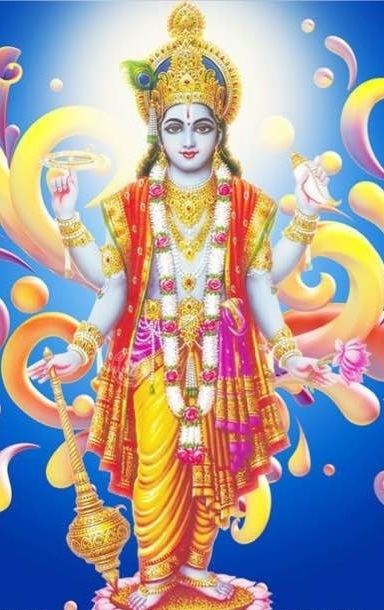 | ||
Hari (Devanagari: हरि), the one who forgives all sins, is a primary god in Hinduism who is an aspect of Vishnu. The terms "Hari" and "Vishnu" are almost used interchangeably. He is described as having the dark complexion of water-filled clouds and having four arms. He is depicted as a pale-blue being, as are his incarnations Rama and Krishna. He holds a padma (lotus flower) in his lower left hand, the Kaumodaki gada (mace) in his lower right hand, the Panchajanya shankha (conch) in his upper left hand and the discus weapon considered to be the most powerful weapon according to Hindu Religion Sudarshana Chakra in his upper right hand and also have a bow named as sharanga and due to which he is sometimes named as sharangapani (hari) in Bhagvad Gita. Om precedes all else as in Om Namah Shivaya, Om Namo Bhagavate Vasudevaya, Om Namo Narayanaya. But only Hari precedes Om in the form of Harih om or Harih om tat sat.
Contents
The word "Hari" is widely used in later Sanskrit and Prakrit literature, Hindu, Buddhist, Jain and Sikh religions. It appears as 650th name of Vishnu in the Vishnu sahasranama of the Mahabharata and hence rose to special importance in Hindu Vaishnavism.
Etymology
The Sanskrit word hari means green or yellow and derives from the Proto-Indo-European root *ǵʰel- 'to shine; to flourish; green; yellow', which also gave rise to Persian zar 'gold', Greek khloros 'green', Slavic zelen 'green' and zolto 'gold', as well as English yellow and gold. The same root occurs in other Sanskrit words like haridrā, 'turmeric', named for its yellow color.
Other Names of Hari
There are many names of lord Hari defined in holy books of Hinduism such as Bhagwad Gita and Mahabharata and many other holy books. some of them which are used usually.
